You must be logged in to rate content!
11 minute(s) of a 620 minute read
12-4-2011
Showtime3492...."Truck has an awesome stance!! Lookin forward to seeing some more.
Too elaborate on the spring perchs i once was asked to build a set out of 3/8 Hardened steel and they were Fully "boxed" to the axle... "
I'm finding that rising the front about 1 1/4" really brings a little more aggresive look. Before, the front squatted more, it gave the look of a weaker attitude.
3/8" and fully boxed spring perches........someone is expecting to do some beating on their vehicle.
I mention the bit about the top plate either being on top of the side plates, or between the side plates. This picture will show how the weight is going to transfer directly to the axle. The far plate is 3/16" above the flat, this will match the height of the top plate when it is in place. Now I just have to gring back the edges where everything meets and start welding.
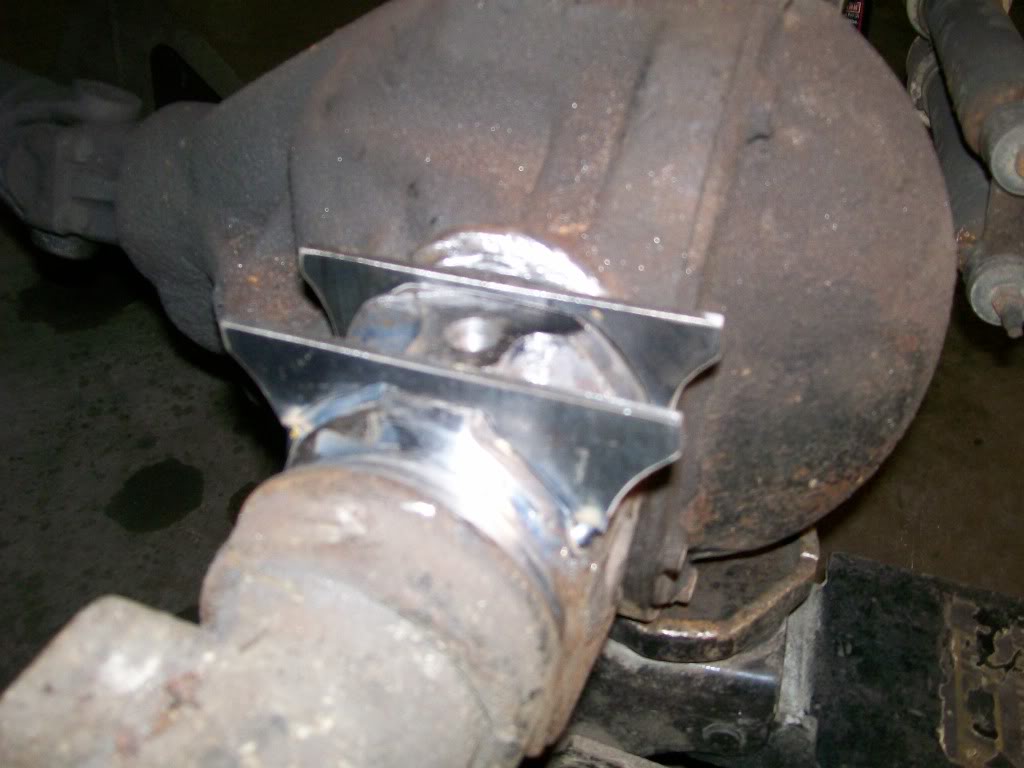
And merry christmas to me.

12-5-2011
Thanks for the support Midnightburn. I didn't start this thread to teach. I've never hardly posted pictures before, and I didn't know what responce I was gonna get.
Once I started it became apparent this thread was a good way not to just show off your stuff, which them I reap the glory, but I found more pleasure in the teaching aspect where we all share in the project and eveybody wins.
Your comment about the caster, the angle of the drive shaft and tilting the axle in a way to eliminate driveshaft angle is a consideration. The upper ball joint is slightly ahead of the bottom one in this situation, meaning I do not have the ideal caster built into the steering system. The caster and camber issues and how they work, I didn't get into as deep as I wanted to. It is a good learning for everybody, and like you say, it could save someone head aches in the future.
As for mine, although not perfect, I've kept it the way it has been. I've concidered making changes..... but I've been ok with it for years. As I've been replacing these perches, I've kept one attached to the axle so when I replace one side, the still atttached one will maintain the previous angles. Mine having 2 steeing stabilizers may be what helps reduce some steeringissues while going down the road.
I just finished the perch for the drivers side. I took a pic of using a level to get the height of the passenger side so I will know the height for the drivers side. The drivers side is higher than most. Internally, since it will have more leverage working against it, I did put a inner brace to eliminate it's possibility of trying to roll over sideways. I'll have the pics in a day or so.
Thanks for the input, I'm sure what you've written will also elighten many reading this thread.
Now for those starting to use, or are gonna use the flap discs..... They have a good agressive life when gringing on edges and corners. It you use them on flats, they are great till the fresh grit wears off the surface of the discs, then after that, they do more polishing than grinding. I still love the great job they do on flats when they are new. In short, they need the metal edge to tear away the layer of paper to get to the grit underneath.
Midnightburn, for some reason I kept looking at my rear bumper location tonight.... stop it. I may have to raise it now. lol.
thomask, I went through quite a few pages a week ago. I know you did alot of reading, glad to hear you enjoyed it.
I don't have time tonight to fully explain about caster and camber, but is is something that will benefit most everyone at one time or another. Especially for those looking to build either a solid axle or independent front suspenson.
Midnightburn and I had a conversation about driveline angle (the angle of which the drive shaft u-joint has to endure). Next, the term caster and the term camber.
I'll post a pic of my driveshaft to the pinion yoke. Obviously I could tip the axle so the pinion yoke is more in an upward angle, thus eliminating the angle in which the u-joint has to work through.
On the rear axle this would be an idea. But even in the rear, I believe the rule of thumb is to try to keep the angle coming out of the transfer case the same as the angle of the driveshaft bolting to the pinion yoke. Keeping these two angles the same will help eliminate the chance of vibration.
On the front, I'd like to angle the pinion more upwards. Although the u-joint would be happy, the steering system would suffer, so I've tried to find a happy in between.
When we mention caster, we are refering to the angle at which the top ball joint is located as compared to the location of the bottom ball joint. Here again there are limitaions as to how far to have these settings.
Ok. driveshaft. You can see the angle between the driveshaft to the pinion yoke.
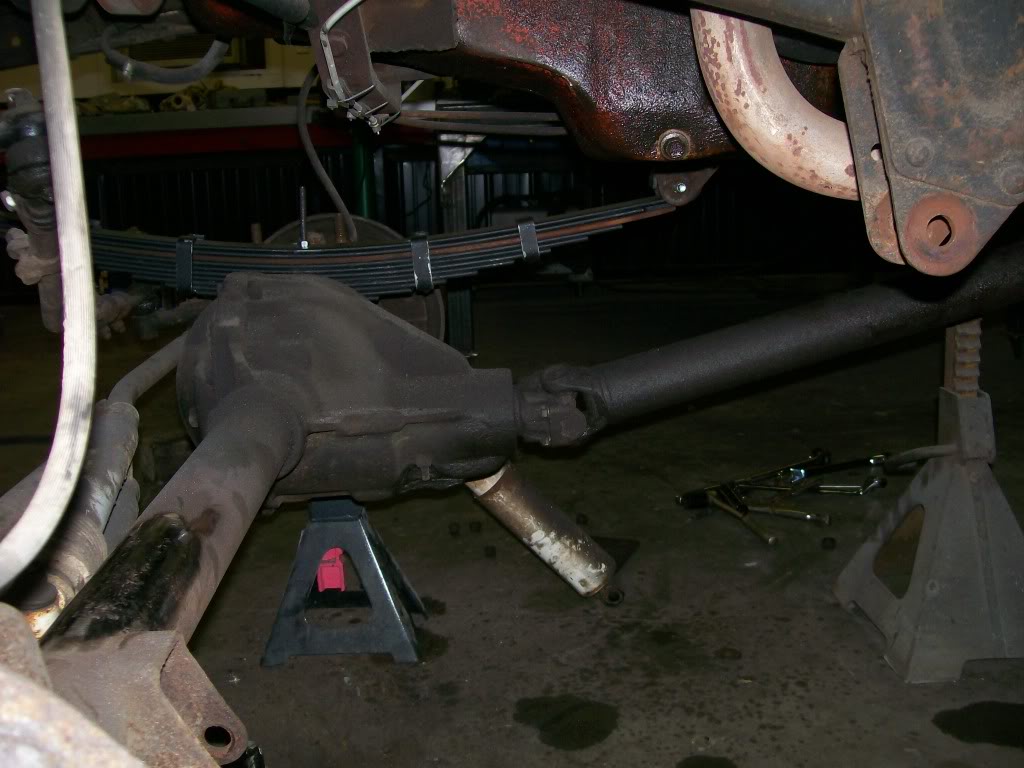
This next picture will give an idea of the caster on this truck. This shows the upper ball joint slightly ahead of the bottom ball joint. This is not the perfered setting. If you've ever driven a vehicle with this set up, the first thing you will notice is the vehicle is either very slow to have the steering wheel to come back to center after a turn, or it won't return at all, you have to turn the steering wheel to get it to return back to center.
Also with this setting, where you may have a little slop in the steering, the vehicle will constantly try to wander, and you constantly have to correct. If the caster is proper, even with sloppy steering linkage, the vehicle will still try to go staight without fighting the steering wheel.
One comparison, think of anytime you've seen a dragster going slow and turning. This vehicle is made for straight forward driving, they build a lot of caster into the steering, notice how the front wheels almost lay over side ways when turning. This may seem like a way to go, but in it's extreme, for anything other than drag racing, this would create a condition called "pushing" while cornering. The vehicle isn't turning on the ball of the tire, it's turning on the heel of the tire.
We still have camber, we'll get to that later.
Here is the pic of the ball joint set-up on my truck. As was noticed earlier, I am running 2 stabilizers, something you not find on most vehicles. Just today I drove the truck down the driveway, I noticed immediatly that I didn't have the stabilizers bolted on. The steering was much easier to turn. These stabilizers help stabilize the wandering effect that I've mentioned.
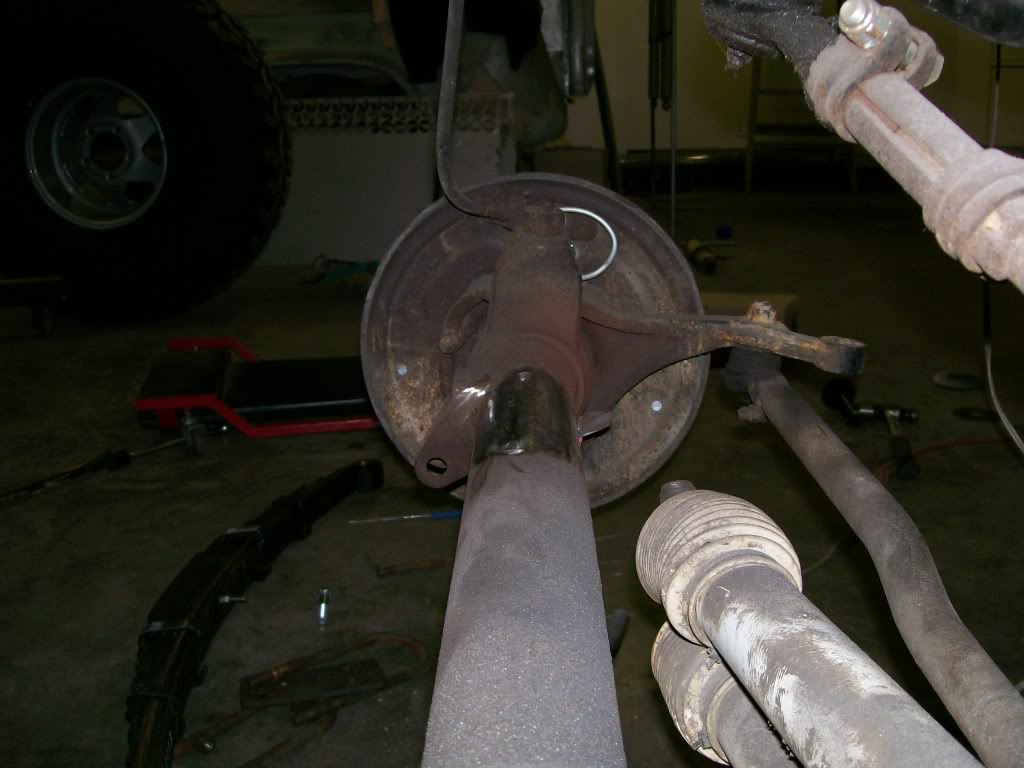
12-6-2011
Let's get get caught up here...
lclark2074, I'd like to see the front look as good as the back also. Basically what I'm doing here in the front is getting the front mechanicals up to standard. I do need to fabricate a new cross frame section under the engine, from frame to frame. Once I remove the engine and this crossframe is fabricated, I'll get to the detail work. I do look forward to the day the detail work gets done, I've looked forward to it for many years now. Also, I know snow is on the way, I have to keep it driveable for a while now. Thanks for checking in.
Basically what I'm doing here in the front is getting the front mechanicals up to standard. I do need to fabricate a new cross frame section under the engine, from frame to frame. Once I remove the engine and this crossframe is fabricated, I'll get to the detail work. I do look forward to the day the detail work gets done, I've looked forward to it for many years now. Also, I know snow is on the way, I have to keep it driveable for a while now. Thanks for checking in.
oldtime_ironman, glad to see your still checking in. Sounds like your hot rodding years taught you well. I learned the hard way about caster and camber. I built a homemade off-road buggy, the first turn under power told the story that I had to go back to the drawing board. Caster and camber school started that night in my shop.
Caster and camber school started that night in my shop. Good to hear from you again.
Good to hear from you again.
ApolloXIII, inspiration.... great, I know over the years I've ventured into many a project due to an inspiration. Hope we've got you thinking.
I'll finish the caster camber tonight. Last couple thoughts on the caster issue. On this project we are looking at a solid axle, fixed ball joint location. I'd like to give the engineers of cars and trucks credit if I may. If we get away from the solid axle we move to independent front suspension. Then we get to unequal length control arms, ect. The whole motion of the wheels ability to maintain the proper contact to earth is the ball joint alignment.
Camber, a liitle easier to understand, and can be seen with the naked eye. Standing infront of the car/truck and looking a the tire. If the top of the tire is tipped inward or outward is a camber situation. Notice I said situation and not problem. There are many different suspension systems that purposely tilt the wheels one way or another.
Not to change the subject, but the old ford trucks with the twin I-beam suspension, holy cow, those things had no camber stability with the way they worked, I'm so amazed the tires wore evenly at all.
Often times when a vehicle pulls to one direction it's a case of camber on one wheel being off set. When the wheel is tipped one way or the other it will be like a motorcycle, lean the wheel and thats the direction it wants to go. Same with a tire that is leaning on a car/truck, it'll pull one way or the other.
Ok. there is also toe in and toe out but I think those are self explanitory.
This isn't enough to answer all possible guestions, but I hope it introduces those who haven't been introduced to front end alignment and what to watch for when setting up your vehicle.
For a while now I've been getting the passenger side perch put together. This side had restictions that had to be worked around. Now that it's done I can take a measurement of it's height and build the drivers side to match it's height.
I simply had to make sure the axle itself is level, then take the level and come off the perch over the axle tube. Now measure the space between the bottom of the level to the axle tube. In this case, 1 1/4 inch.
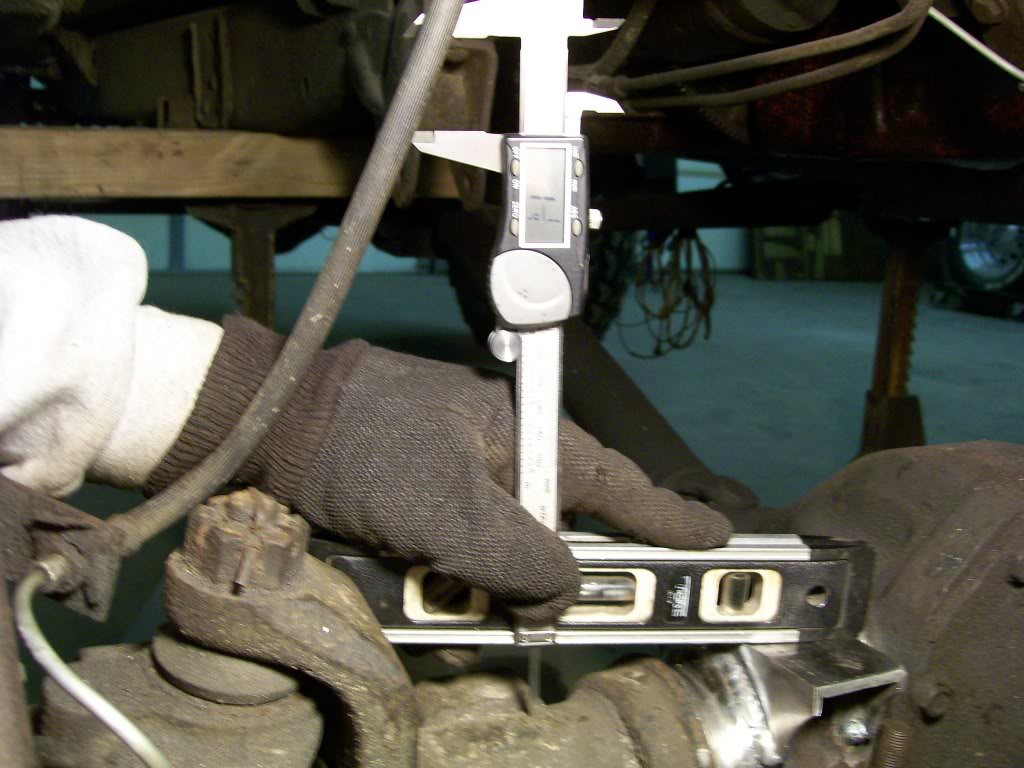
Now make the side plates that measure 3/16" under 1 1/4". This way when I weld the top plate on the side plates, I'll have my matching 1 1/4" height.
A perch that is that high off the tube is not ordinary. My concern, as we've touched on earlier, is the idea of it collapsing sideways, due to it's height. I can pretty well eliminate the collapsing issue by welding the side to side plates to the top plate. This picture shows the internal brace to eliminate the weakness of the height.
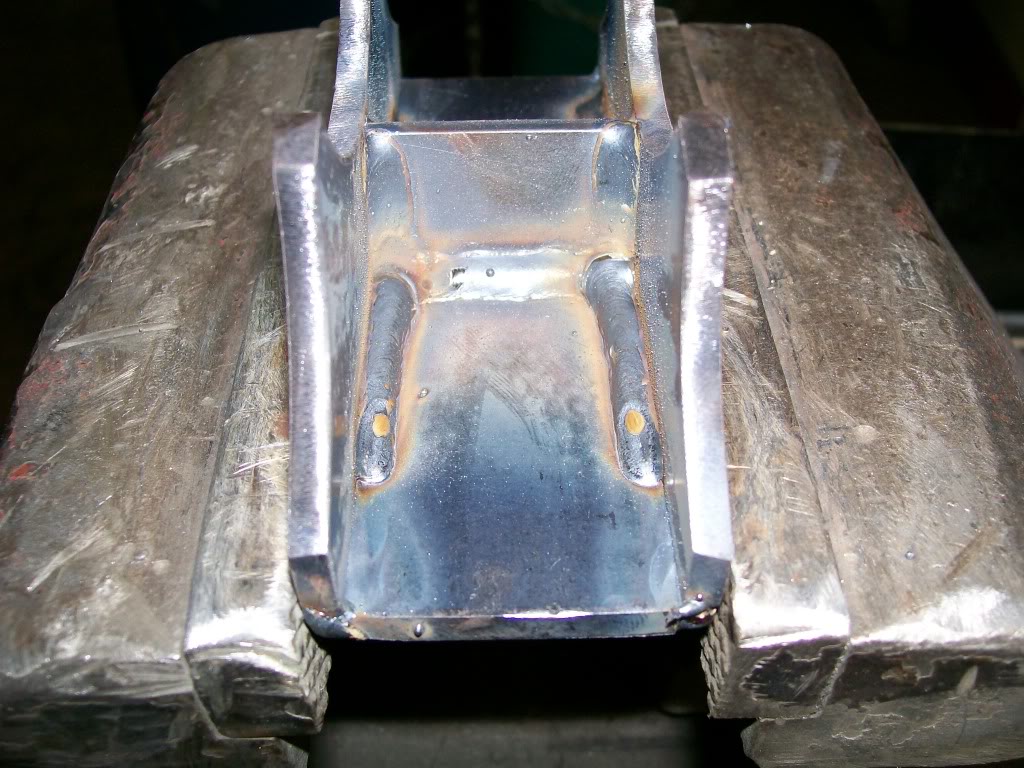

Ultimate classic truck right there
Posted by CCmyVW on 12/26/20 @ 4:17:42 PM